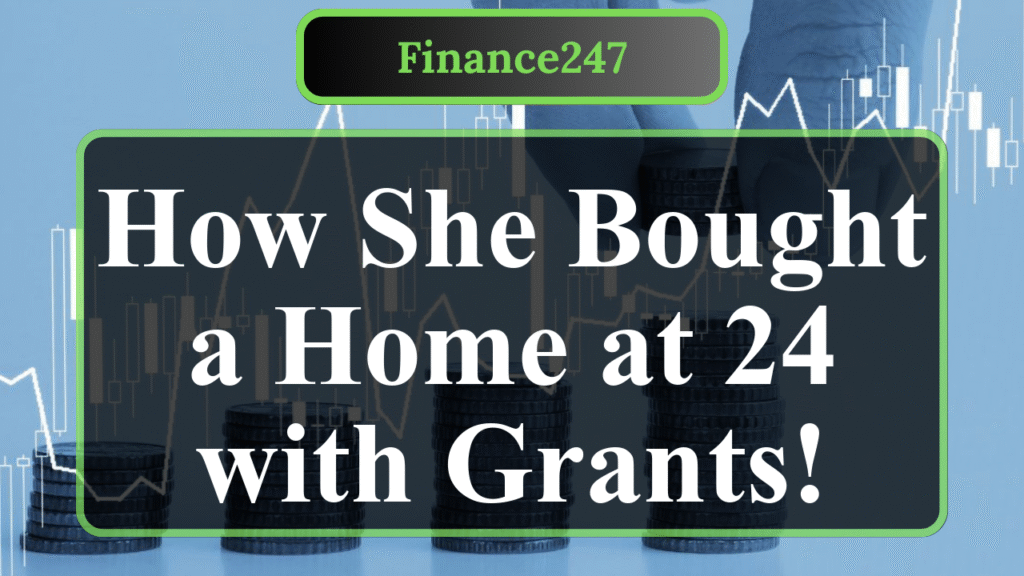“A young buyer leveraged first-time homebuyer grants to afford a $395,000 home with just a 3% down payment. By combining government-backed loans, a $10,000 grant, and strategic financial planning, they overcame high housing costs. This article explores available grants, eligibility criteria, and actionable steps to help young buyers navigate the homebuying process using similar assistance programs.”
Navigating Homeownership: How Grants Helped a Young Buyer
In 2025, with median home prices hovering around $412,300 according to Realtor.com, young buyers face steep challenges in entering the housing market. AnnaKate Nottonson, a 24-year-old technology consultant and fitness trainer, exemplifies how strategic use of grants can make homeownership achievable. Earning less than $100,000 annually, she purchased a two-bedroom, two-bath home in North Carolina for $395,000, using a 3% down payment and a $10,000 grant from her loan officer. Her story highlights the power of first-time homebuyer programs.
First-time homebuyer grants are financial assistance programs designed to cover upfront costs like down payments and closing fees, often without repayment if conditions are met. These programs, funded by federal, state, local governments, and nonprofits, typically target low- to moderate-income buyers—those earning 80% to 120% of the area median income (AMI). For example, the U.S. Department of Housing and Urban Development (HUD) supports programs like the HOME Investment Partnerships, which offer grants up to $25,000 for eligible buyers.
Nottonson qualified as a first-time buyer, defined as someone who hasn’t owned a home in the past three years. She utilized a conventional loan with a low down payment, supplemented by the grant, which covered a portion of her $7,000–$10,000 closing costs. Her mortgage payment, even with a roommate, proved lower than her previous rent, building equity in an asset. Programs like Fannie Mae’s HomeReady and Freddie Mac’s Home Possible, offering 3% down mortgages, were critical in her strategy. These loans often pair with grants like the Fannie Mae Community Seconds Program, which provides up to 5% of the home’s purchase price as a second mortgage for down payment or closing costs.
Eligibility for grants varies but commonly includes income caps, minimum credit scores (typically 620–680), and purchasing a primary residence. For instance, Bank of America’s Down Payment Grant offers up to $10,000 in select markets for buyers with incomes up to 120% of AMI. Similarly, the Texas State Affordable Housing Corporation provides up to 5% of the loan amount as a non-repayable grant. Nottonson met these criteria, completing a mandatory homebuyer education course, which equipped her with financial planning skills.
Beyond grants, deferred-payment loans and forgivable loans are options. The California Housing Finance Agency’s MyHome Assistance Program, for example, offers up to 3.5% of the purchase price, forgivable after five years of residency. In New York, the HomeFirst Down Payment Assistance Program provides up to $100,000 for buyers in the five boroughs. These programs often require documentation like pay stubs and employment verification, which Nottonson prepared meticulously.
High interest rates, averaging 6.85% for a 30-year fixed mortgage per Freddie Mac, and inflation complicate affordability. Yet, young buyers can explore additional resources. The Good Neighbor Next Door program, aimed at teachers and first responders, offers 50% discounts on homes in revitalization areas. The Mortgage Credit Certificate (MCC) program provides a tax credit of up to $2,000 annually, boosting borrowing power. Nottonson’s case underscores the importance of researching local and state-specific programs, as many are tailored to professions or income levels.
Strategic moves, like buying a fixer-upper or relocating to more affordable areas, also helped. A BMO survey notes 61% of young buyers are open to fixer-uppers, while over half consider moving states for cheaper homes. Minnesota, Utah, and West Virginia rank high for young buyers due to higher homeownership rates and lower costs, per Evernest’s 2025 study.
Nottonson’s success hinged on leveraging multiple resources: a low-down-payment loan, a grant, and a roommate to offset costs. Young buyers can replicate this by contacting state housing finance agencies, exploring HUD’s resources, or consulting local lenders familiar with grant programs. Pre-approval for a mortgage and improving credit scores—by paying down debt and making timely payments—enhance eligibility. While the proposed $25,000 Downpayment Toward Equity Act remains unpassed, existing programs provide substantial aid.
Disclaimer: This article provides general information based on publicly available data, reports, and news. It is not financial advice. Consult a certified financial advisor or housing counselor before making homebuying decisions. Sources include Realtor.com, Freddie Mac, HUD, Fannie Mae, Freddie Mac, Bank of America, and other housing authorities.


